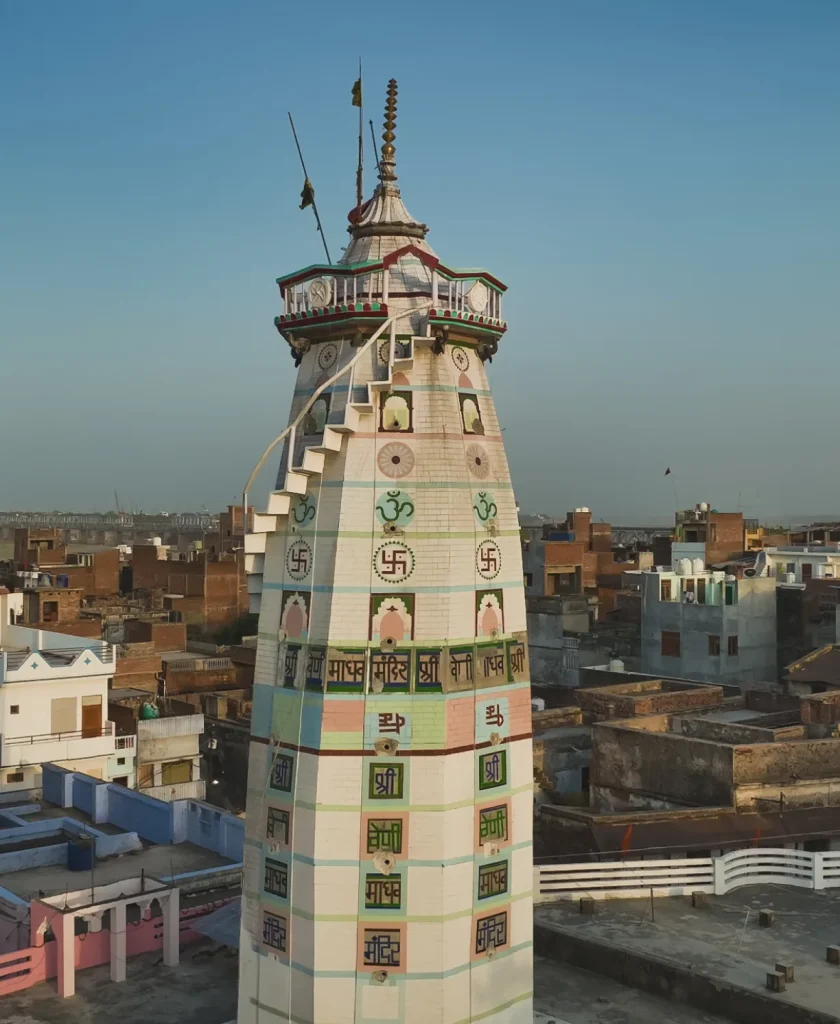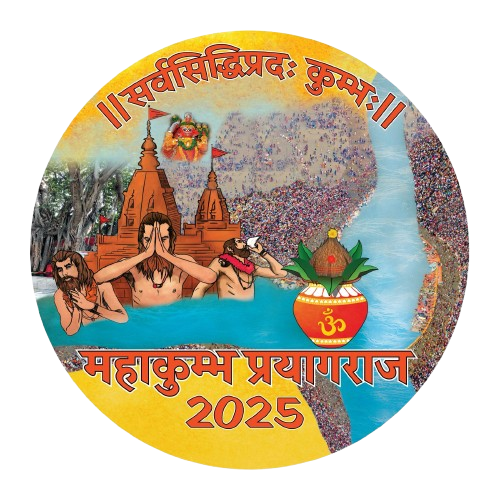- Home
- »
- Rituals of Kumbh
Rituals of Kumbh
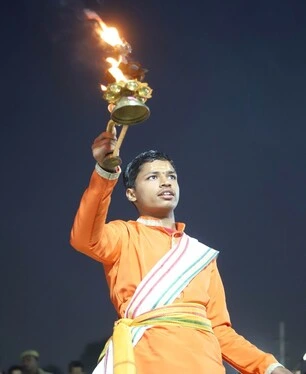
Aarti
Aarti In India, since ancient times, various forms of nature like rivers, mountains, and trees have been deemed Gods. In this course, continually flowing rivers served as a lifeline and are given immense importance. In simpler words, human existence demonstrates their gratitude towards rivers through Aartis on the riverbanks in which people participate to show their devotion towards the rivers. At places, these numbers are in hundreds, in others, they may reach several thousand and on special days the participants for these rituals gather in lakhs. Likewise, in Tirathraj Prayagraj, Aartis’ are performed on the banks of Ganga, Yamuna and at Sangam with great admiration, deep-rooted honor and devotion. In Prayagraj, Prayagraj Mela Authority and various other communities make grand arrangements for these Aartis. Lakhs of devotees take part on these occasions on special festive days. The Aartis are performed in the mornings and evenings, in which Batuks (priests), normally 5 to 7 in number, chant hymns with great fervor, holding meticulously designed lamps and worship the Ganga, the Yamuna and the Sangam with utmost devotion. The lamps held by the batuks represent the importance of panchtatva. On one hand, flames of the lamps signify bowing to the waters of the sacred rivers and on the other, the holy fumes emanating from the lamps appear to play the mystic of heaven on earth.
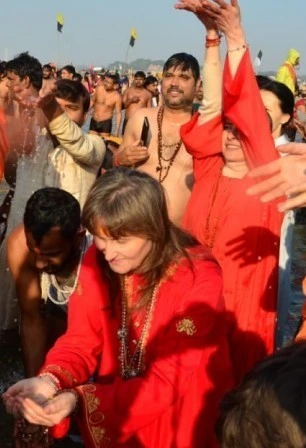
Snan
Prayagraj Kumbh comprises of many rituals including bathing ritual, which by far is the most significant rituals performed at Kumbh. Millions of pilgrims take part in the Kumbh bathing ritual at the Triveni Sangam. Performing this sacred ritual is in accordance with the belief that by submerging oneself in the holy waters, one is purged of all their sins, release themselves and their ancestors from the cycle of rebirth and ultimate attainment of Moksha. Along with the bathing ritual, the pilgrims also worship on the banks of the holy river and participate in discourses from various sadhus and saints. Although taking the dip in the sacred waters on all days of Prayagraj Kumbh beginning from Makar Sankranti (first day of the month of Magh, when the Sun enters Capricorn) is considered holy, yet there are some specific auspicious bathing dates. There are magnificent processions of saints and their disciples, and members of various Akharas (religious orders) take part in the ritual of Shahi Snan also known as ‘Rajyogi Snan’ at the start of Kumbh. Shahi Snan is the central highlight of Kumbh Mela and the most important part of the celebration. Only after the Shahi Snan people are allowed to take the holy bath, in the belief that the people will get the added advantage of the essence of holy deeds and thoughts of the holy saints by taking the holy dip after them.
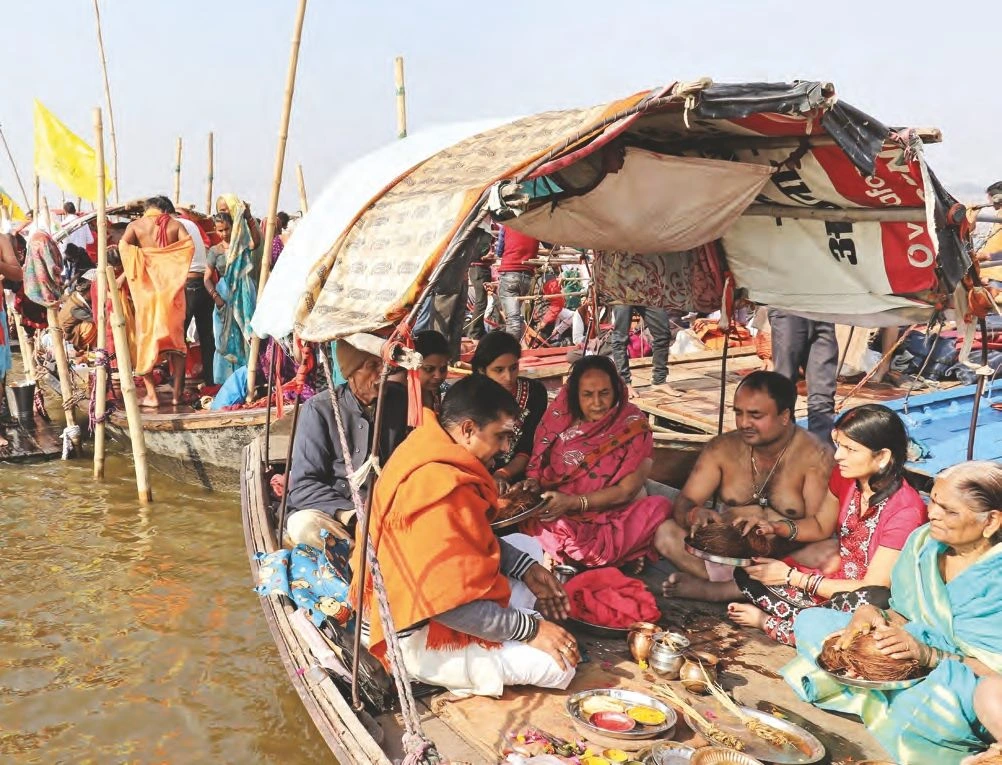
Kalpavas
Kalpavas, at the sacred confluence at Prayagraj during Maha Kumbh holds a special significance. According to ‘Brahma Purana’ and ‘Padma Purana’, the period of Kalpavas is from Ekadashi of the full moon in the Paush month up to ‘Maghi Ekadashi’. Maharishi Dattatreya outlines the ritual of Kalpavas in detail in the ‘Padma Purana’. According to the scripture, a Kalpavasi has to observe the 21 rules through mind, speech, and action. These rules are as follows:
- True speech, i.e. (Abstinence from untruthfulness)
- Non-violence
- Mitigation of senses
- Feeling benevolence for all living beings
- Renunciation of all indulgence
- Rising before sunrise
- Observance of ‘Trikal Sandhya’
- Pind Daan’ of ancestors
- Shetra Sanyas (Non-violation of reserved space)
- Renunciation from criticism
- Offer services to ascetics and saints
Moreover, a Kalpvasi is supposed to wear only clean silk or woolen, white or yellow clothes. It is believed that leading this kind of life cleanses the body and soul.
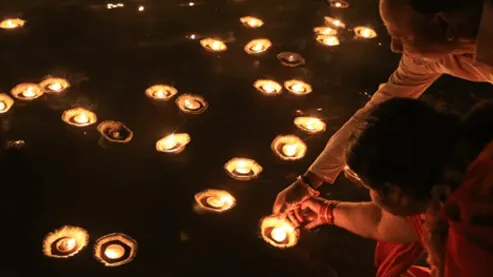
Deep Daan
At Triveni Sangam, numerous sparkling oil lamps fill the innermost conscience of the devotees with a heavenly feeling. Thousands of lighted Diyas (lamps) spread the light of spirituality across the environment in such a manner that the waves of religious fervour and devotion affect even the most atheist of people. The verbal meaning of ‘Deep Daan’ is the offering of lighted earthen lamps at specific places such as river banks, near temples, religious trees, in forests, or at any other sacred location. Devotees offer lighted earthen lamps (Deepak) in a specific month, at specific places and on specific occasions. For example, in the month of Kartik, Deep daan is done near the sacred Tulsi plant. On festivals like ‘Ganga Dussehra’, ‘Dev Deepavali’ ‘Magha Mela’, or ‘Kumbh Mela’, devotees make a vessel from leaves on which a lamp made of wheat flour filled with oil along with a cotton strand is lighted and floated on water as an offering of gratitude towards the river. Deep daan is also offered in thousands of numbers by boats by some devotees depending on their devotion, ability and commitment. Floating lighted Diyas on flowing water seem like twinkling stars reflecting divine brilliance in the Ganga. During Kumbh Mela in Prayagraj, this presents a mesmerising scene.

Triveni Sangam
Triveni Sangam is the confluence of the Ganga, the Yamuna and the mystical Saraswati. The Saraswati River is said to be the invisible river that surfaces only during Kumbh with the sacred chanting of hymns and elucidations representing knowledge. Sangam is said to be the basis of the congregation of millions of Pilgrims. In Mahabharata, it is stated that around sixty crore ten thousand pilgrimages are found in Prayagraj, and sangam is considered to be the base of most of the sixty crore pilgrimages. As per mythology, the pilgrimages are said to be brought to Sangam by the rivers themselves and that any spot where the holy water of these rivers reach is in itself a pilgrimage destination. Sangam has seen pilgrims and sages worshipping at the banks of the holy river since time immemorial. Millions of pilgrims visiting the Sangam during Maha Kumbh, Kumbh, and Ardha Kumbh are living proof of the spirit of Sangam. Various texts have defined Sangam, among which Bramha Purana refers to achieving the benefits of Ashvamedha Yajna by bathing at Sangam and Matsya Purana refers to achieving the benefits of the combined worship of ten thousand pilgrims. Skanda Purana has detailed the benefits of the various Snans (holy baths) during the holy months of January to March. These include Maghi Purnima, Basant Panchami, Mauni Amavasya, and Makar Sankranti.
Prayagraj Panchkoshi Parikrama
The changing times have had an impact on the course and the nature of the Kumbh festival. The rituals of “Parikrama” (circumambulation) have had a direct impact of such changes. Today, the ritual that has been an integral part of “Kumbh” since time immemorial has mostly lost its existence. In order to revive this historical ritual of utmost significance, the Shri Akhada Parishad and Mela Authority have re-mapped the “Parikrama” path and further plans to develop the temples that appear along this path. The goal here is to re-establish a historical ritual while providing an opportunity to the new generation to acquaint themselves with the rich history of this event of cultural, religious and spiritual significance. “Dwadash Madhav” temples and other significant temples that appear en route of “Prayagraj Panchkoshi Parikrama".
